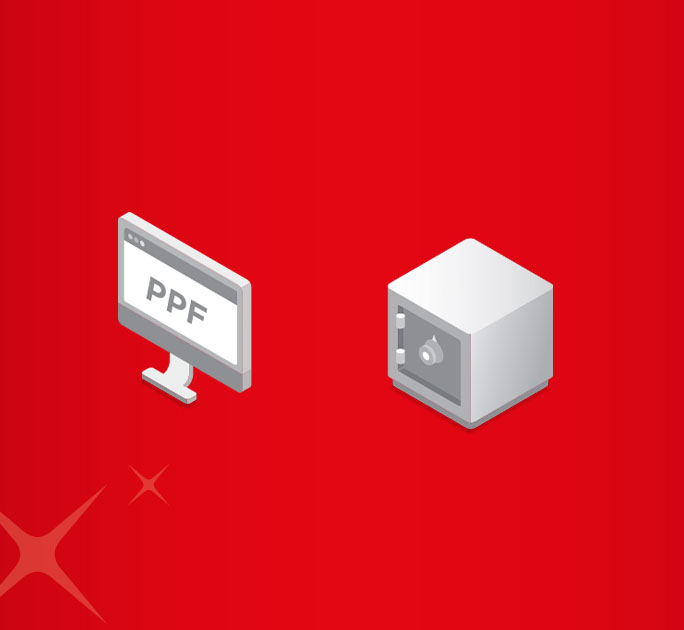- Save
- Invest
- Borrow
- Pay
- More
- NRI Banking

FD vs RD
Comparing the differences between Fixed Deposit and Recurring Deposit.
Key Takeaways
- Fixed Deposits are a one-time investment locked away for a pre-specified tenure.
- Recurring Deposits allow you to invest small amounts at monthly intervals.
- Minimum tenure for FD vs RD is seven days and six months, respectively.
- You can earn cumulative or non-cumulative interest on FD.
- Banks pay RD interest at the end of the investment term.
For generations of investors, bank deposits have remained the popular investment choice. Safe from market fluctuations and capital erosion risks, Bank deposits guarantee fixed returns at specific intervals. You can open two types of Deposits in India – Fixed and Recurring Deposits. Let us compare Recurring Deposits Vs Fixed Deposits to ascertain the better investment option.
FD Vs RD – Meaning
A Fixed Deposit is an investment wherein you can invest a lump sum fixed amount over a fixed period and earn fixed interest. Typically, you should avoid redeeming the principal amount and interest earned before investment tenure ends. However, you may prematurely withdraw your FD by paying the applicable penalty.
A Recurring Deposit is another type of deposit where you must park a fixed amount for a fixed period to earn interest income. However, you must invest the same amount at fixed (typically monthly) intervals. Unlike FDs, you do not need a lump sum investment to create RDs.
Difference Between FD and RD
The main differences between RD and FD include:
Investment tenure
The minimum investment tenure for FDs is seven days, whereas for RDs is six months. If you wish to redeem the deposit amount before the minimum tenure, you must forfeit the interest earned.
Minimum investment
The minimum investment amount for FDs is generally higher than for RDs. You must invest at least INR 5,000 in FDs, whereas your monthly RD contribution can be as low as INR 100.
Frequency of deposits
You must deposit funds upfront at the start of the FD tenure and lock the money till maturity. With RDs, you must deposit funds in monthly intervals. Some banks also permit quarterly RD investments.
Which Is Better – FD vs RD?
One factor to determine which deposit is better is comparing maturity amounts of FD Vs RD. Suppose Tina deposits INR 60,000 in an FD, and Anil deposits INR 5,000 every month in an RD. Both investors opt for the investment tenure of 1 year and are promised a 5% interest rate by the bank. Since interest is compounded quarterly, you will get the following calculation.
|
Month |
Fixed Deposit |
Interest % |
Quarterly Interest |
Recurring Deposit |
Interest % |
Quarterly Interest |
|
1 |
60000 |
0 |
5000 |
0 |
||
|
2 |
60000 |
0 |
10000 |
0 |
||
|
3 |
60000 |
1.25 |
750 |
15000 |
1.25 |
188 |
|
4 |
60750 |
0 |
20188 |
0 |
||
|
5 |
60750 |
0 |
25188 |
0 |
||
|
6 |
60750 |
1.25 |
759 |
30188 |
1.25 |
377 |
|
7 |
61509 |
0 |
35565 |
0 |
||
|
8 |
61509 |
0 |
40565 |
0 |
||
|
9 |
61509 |
1.25 |
769 |
45565 |
1.25 |
570 |
|
10 |
62278 |
0 |
51134 |
0 |
||
|
11 |
62278 |
0 |
56134 |
0 |
||
|
12 |
62278 |
1.25 |
778 |
61134 |
1.25 |
764 |
|
63057 |
3057 |
61899 |
1899 |
The maturity amount for FD is higher than RD. However, RD gives you the flexibility of smaller investment amounts.
Final Note
Comparing FD vs RD helps you find the better investment option to suit your needs. The FD is the better option for investors with lumpsum amounts, whereas those looking to invest smaller amounts can consider RDs.
If you prefer to save time and effort, and open an FD account remotely, then download the DBS Bank app right away!
*Disclaimer: This article is for information purposes only. We recommend you get in touch with your income tax advisor or CA for expert advice.













